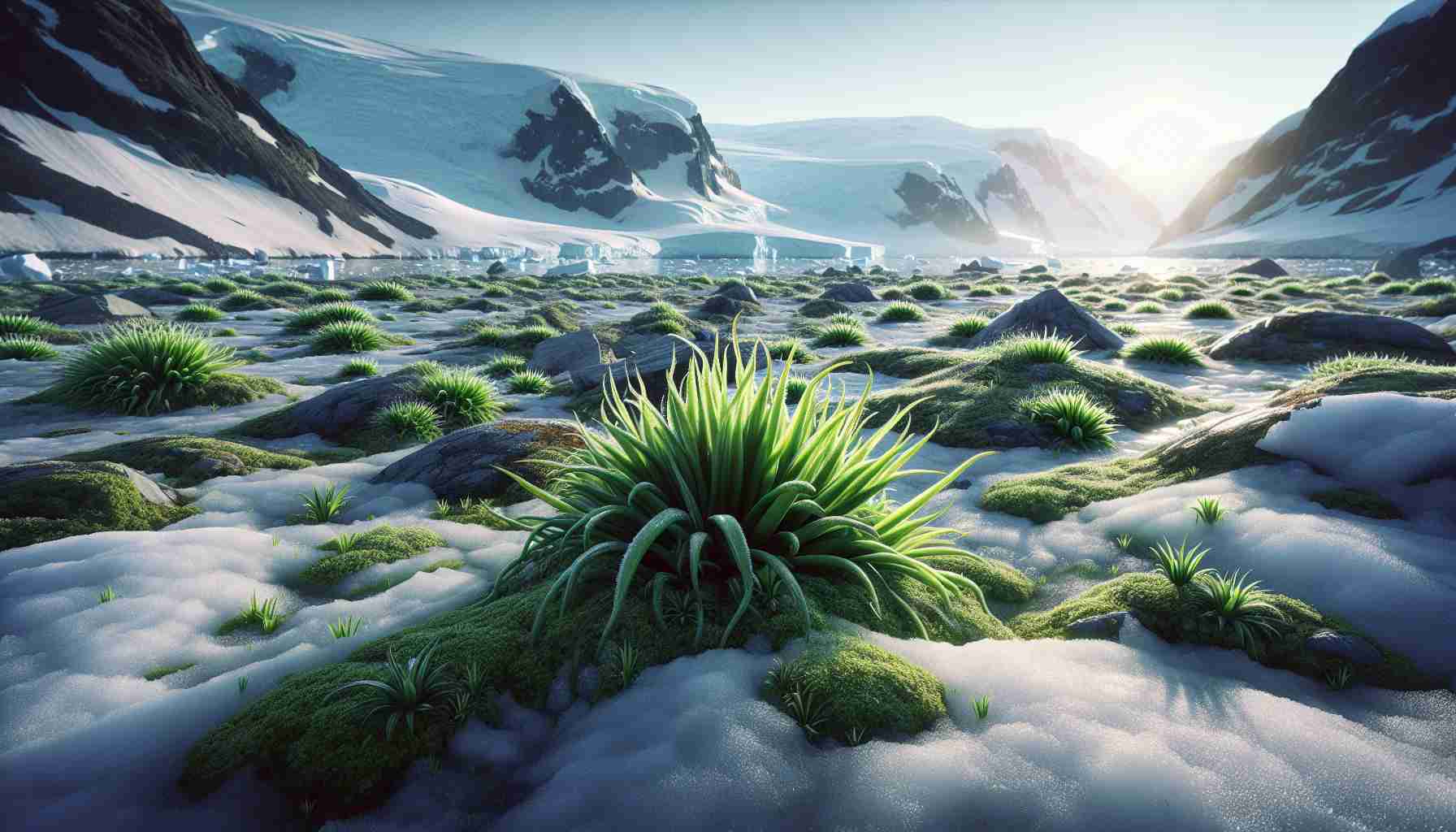Satellites, our silent observers, have unveiled a startling sight: a greener Antarctica. Over the past 35 years, researchers have accumulated a wealth of satellite imagery documenting this surprising transformation on the icy continent, revealing an increase in vegetation spurred by climate change.
NASA, along with the United States Geological Survey, launched their first Landsat satellite back in 1975. Over time, eight more have followed, culminating with Landsat 9 in 2021. These eye-in-the-sky satellites have chronicled the Earth’s changes with millions of images, providing invaluable data that shows an unmistakable growth in Antarctic greenery.
A groundbreaking study, published in Nature Geoscience, highlights the spread of vegetation across the Antarctic Peninsula using data from multiple Landsats. Led by environmental scientist Thomas Roland and remote sensing expert Olly Bartlett, the team uncovered that since 1986, the vegetated area has shot up from 0.86 square kilometers to nearly 12 square kilometers by 2021.
This unexpectedly vast spread of mosses and lichens around the peninsula’s warmer edges signals a shift in the area’s ecology, driven by global warming. These tough pioneer species thrive on bare rock, laying the groundwork for future plant life by breaking down the surface into soil and providing essential organic matter.
The rise in greenery is not simply a visual transformation; it represents broader ecological implications. As the region warms, native flora and fauna may face competitors, potentially altering the biodiversity landscape. The exploration of these emerging plant communities is the next frontier for researchers, as they aim to understand the on-the-ground effects fully.
Is Antarctica Turning Green? Discover How Climate Change is Transforming the Icy Continent!
Satellite imagery from the past 35 years has unveiled an intriguing transformation in Antarctica: an increase in vegetation. This surprising development has been attributed to climate change, showcasing new levels of greenery on a continent traditionally known for its vast icy landscapes.
Specifications and Innovations in Satellite Technology
The evolution in satellite technology has been remarkable, with NASA and the United States Geological Survey launching their first Landsat satellite in 1975. Since then, eight additional satellites have been deployed, culminating with Landsat 9 in 2021. These high-tech devices have chronicled Earth’s changes meticulously, now revealing significant ecological shifts in Antarctica.
These satellites utilize advanced sensors and imaging technologies to capture detailed earth observations, allowing researchers to monitor environmental changes over time accurately. The refined data from these innovations have been central to identifying the unexpected spread of vegetation across the Antarctic Peninsula.
Ecological Implications and Predictions
The increase in vegetation, primarily mosses and lichens, signals a shift in Antarctica’s ecology. These species are pioneering the transformation, thriving on the bare rock and gradually converting it into fertile soil. This greening raises questions about Antarctica’s future biodiversity landscape. As the climate continues to warm, native flora and fauna may encounter new competitors, potentially altering the existing ecological balance.
The findings flag important questions regarding future biodiversity challenges. Researchers are focusing on understanding the potential impacts on native species and how these emerging plant communities will influence the Antarctic ecosystem.
Environmental Impacts and Security Aspects
The greening of Antarctica could have broader environmental consequences. More vegetation might impact local albedo effects—the ability of the earth’s surface to reflect sunlight—subsequently influencing temperature and climate patterns. Additionally, there are concerns regarding the preservation of Antarctic ecosystems in light of these rapid changes.
Ongoing research is crucial to anticipate security aspects related to sea-level rise, as melting ice and increased vegetation may disrupt local and global environmental conditions. This data will be vital for policymakers and environmental agencies in drafting long-term climate strategies and policies.
Trends and Insights
This surprising increase in Antarctic vegetation aligns with global climate trends, indicating a substantial ecological shift. The data insights provided by the Landsat missions offer rich predictive capabilities, allowing scientists to forecast future changes and inform global climate models.
The spread of plant life in this region underpins the urgency of climate action and serves as a clarion call for global cooperation in tackling climate change. By monitoring these changes through satellite imagery, scientists are better equipped to inform and adapt to the altering, warming planet.
Further reading on satellite technology and its impact on tracking global changes can be found at NASA and details of the Landsat missions are available at USGS.







